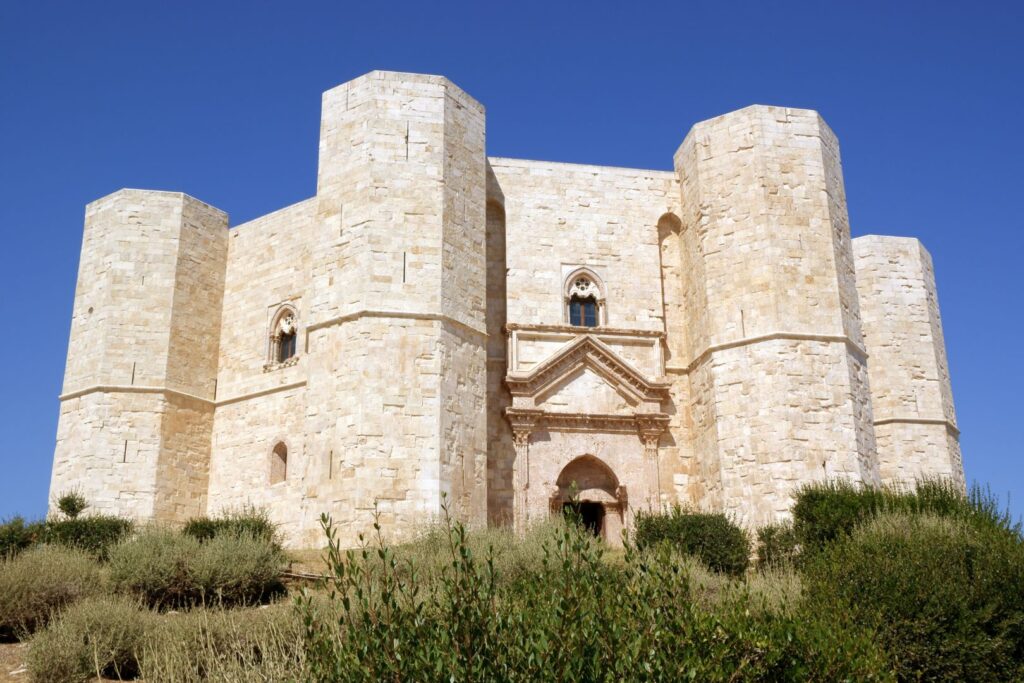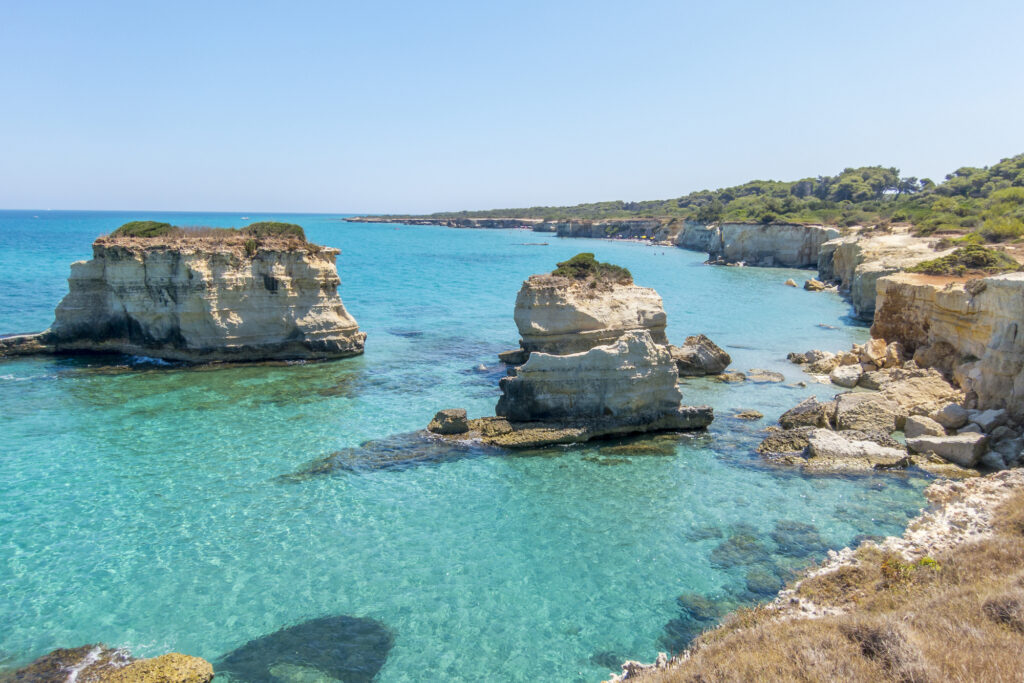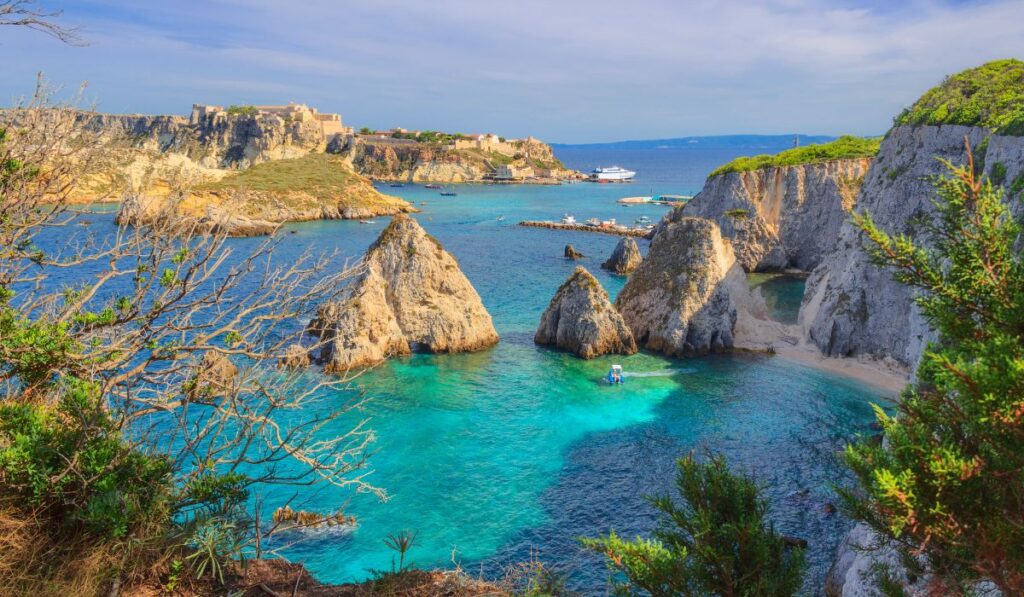Apulia is a southern Italian region facing the Adriatic Sea that, due to its shape, represents the heel of the “Italian boot.”
With its 105,000 hectares of vineyard area, it now plays an important role in the vast panorama of Italian viticulture.
In the past the focus of producers was on quantity, producing grapes used to enrich northern Italian and French wines with low alcohol content. Recently, many autochthonous grape varieties are being rediscovered, and production is also being appreciated for quality.
Viticulture in Apulia has ancient roots, dating back to before the Phoenicians, before 2000 B.C.. who introduced more advanced grape varieties and production techniques.
The wines of Puglia were marketed by Greek and Roman settlers, who transported them by ship throughout the Mediterranean with special amphorae that are very common archaeological finds today.
Puglia is a very large region with a very diverse territory, which is reflected in the complexity and enological variety of the region: in Puglia there are 28 DOCs (ranked second in Italy, after Tuscany) and 4 DOCGs, which are the most important classifications for wine in Italy.
Apulian vineyards are mainly red grapes, but both red and white or rosé wines stand out in the production.
Food and wine vacations in Apulia

There are many prestigious wineries, on the Gargano we find Cantine Merinum, not far from the Umbra Forest, a Unesco World Heritage Site.
Three wines are produced in the small family winery: white, red and rosé, exclusively from indigenous grape varieties of the area, such as “Bombino bianco,” “Nero di Troia,” “Sussumaniello” and “Malvasia nera.”
You can taste these wines during a vacation at the “Residence Tenuta Padre Pio” in Vieste, Puglia’s major tourist center. At Tenuta Pare Pio you can get to know the most authentic sides of Pugliese cuisine, including bruschetta with extra virgin olive oil and a plate of orecchiette pasta with turnip tops.
A nice solution for a vacation between sea, nature and good Italian food.
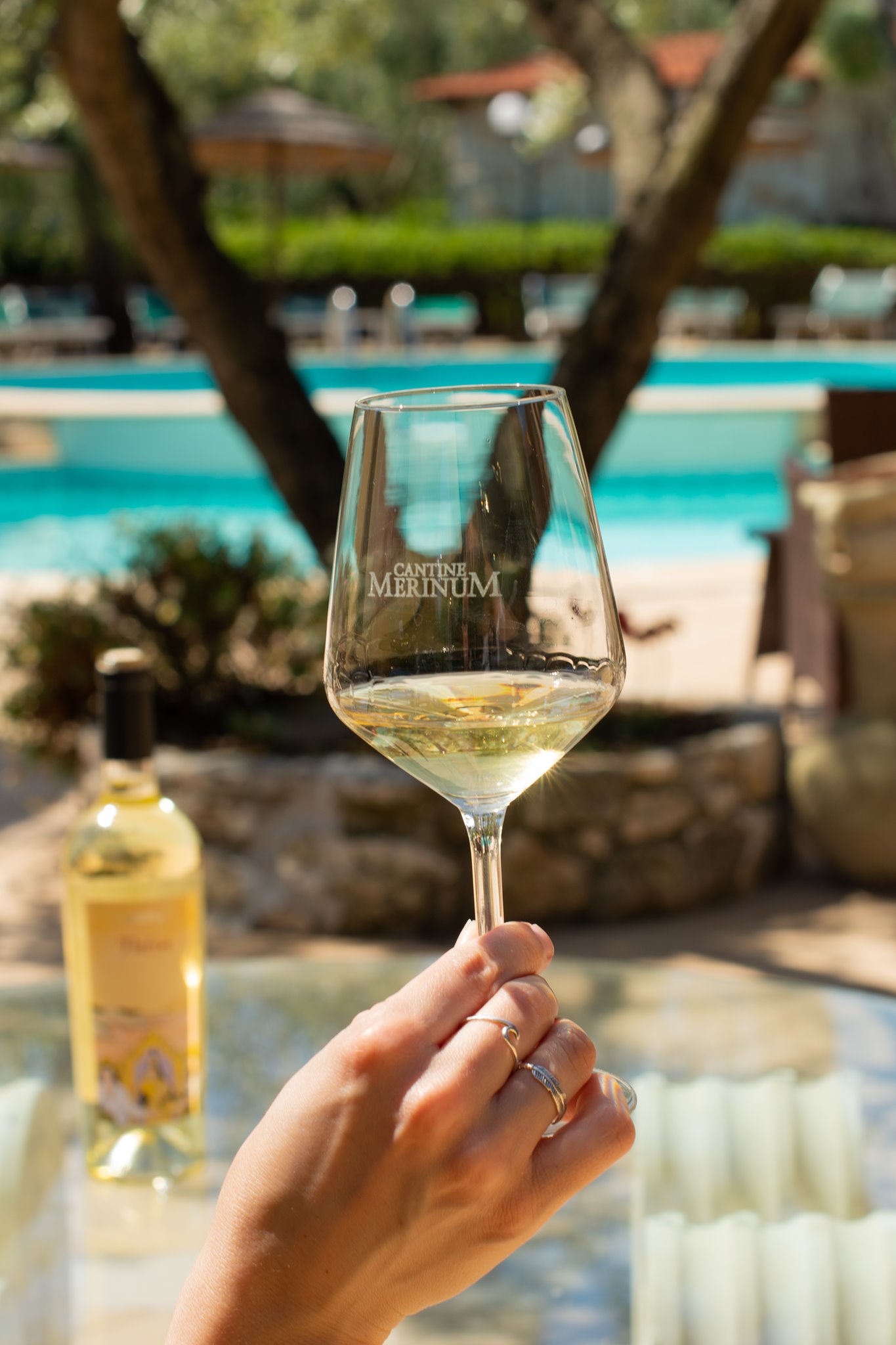
Apulia’s red wines
There are 3 main red grape varieties,
Negramaro, Primitivo and Nero di Troia.
Negramaro is widespread in the south, in the Salento area. On its own it is a wine with a slightly bitter taste but quite versatile:it is appreciated with typical Salento dishes and main courses of red meat or roast game.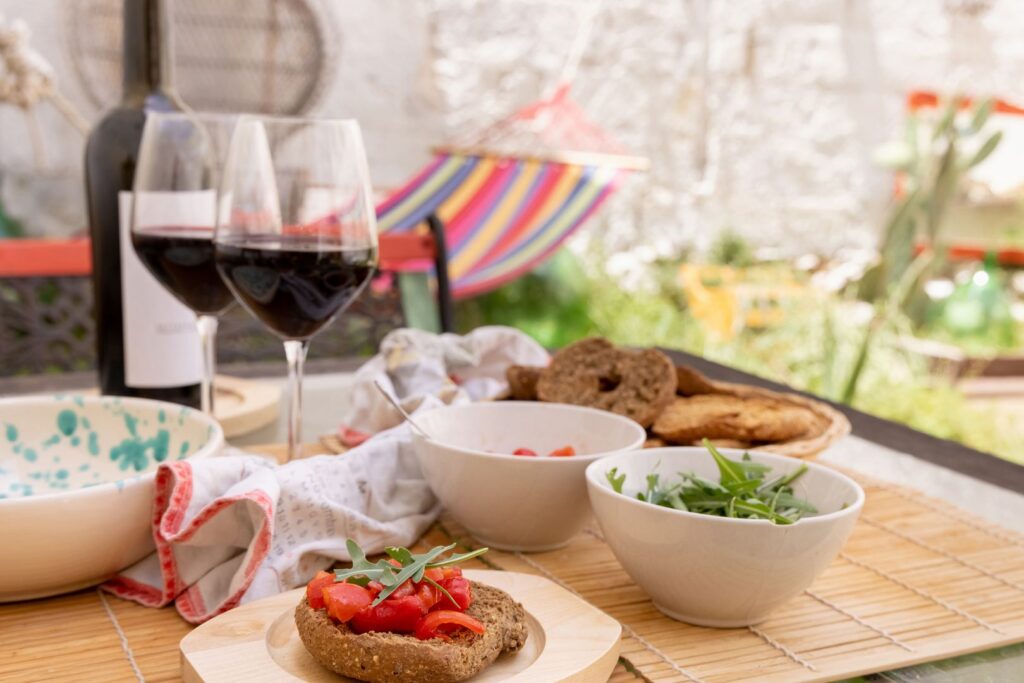
Like Negroamaro, the Primitivo grape variety is also native to southern Apulia, particularly in the lower Murgia region between the provinces of Brindisi, Taranto and Bari. The most famous wine made from this grape is Primitivo di Manduria DOC.
With a full flavor, Primitivo is also particularly good with typical Apulian cuisine and roasted meat main courses.
In the Foggia area we find another great native grape variety: Nero di Troia. It takes its name from a place of the same name, although legend links this wine to Diomedes, the Homeric hero who is said to have brought the variety here after the Trojan War.
Nero di Troia is an imposing wine, which is why in past decades it used to be blended with gentler wines, although in recent years it has begun to be produced as a pure wine of excellent quality.
Apulian rosé wines
Rosé wines are the pride of Puglia, which produces 40 percent of Italian rosé wines.
There are excellent examples of Rosati produced from Bombino Nero and Negroamaro that are well suited to both land and sea cuisine.
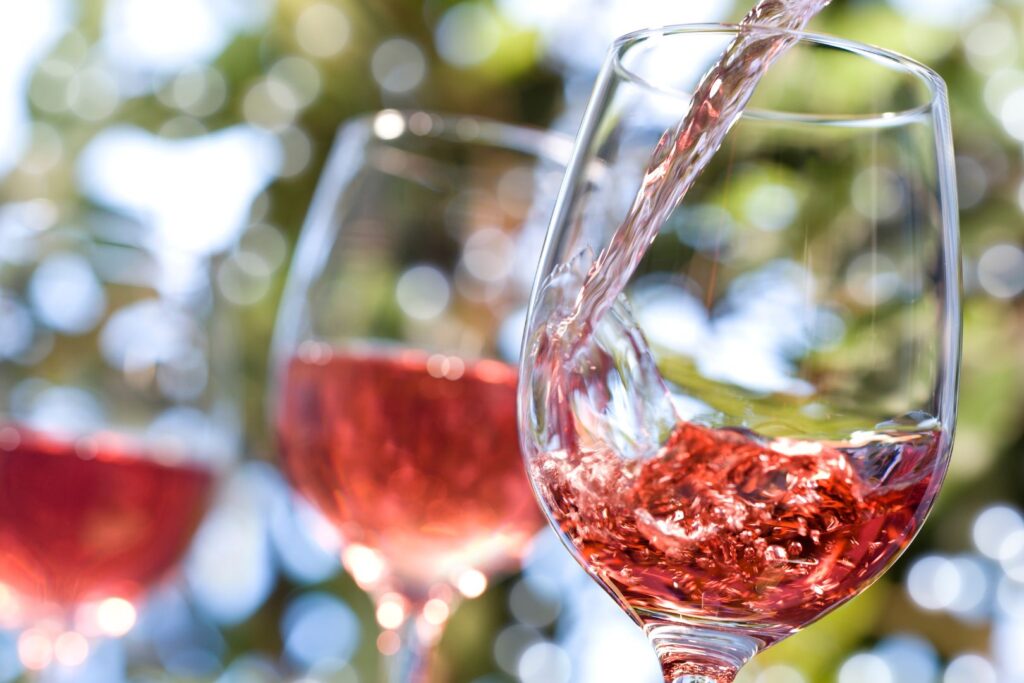
The first rosé wine to be marketed in Italy is Salice Salentino from the “Leone De Castris” winery, which produced “Five Roses” in ’43.
Rosé sparkling wines are also produced, such as those of “D’Araprì” of San Severo, which with its classic method sparkling wines has succeeded in attracting everyone’s attention, placing itself among the national excellences.
White wines of Apulia
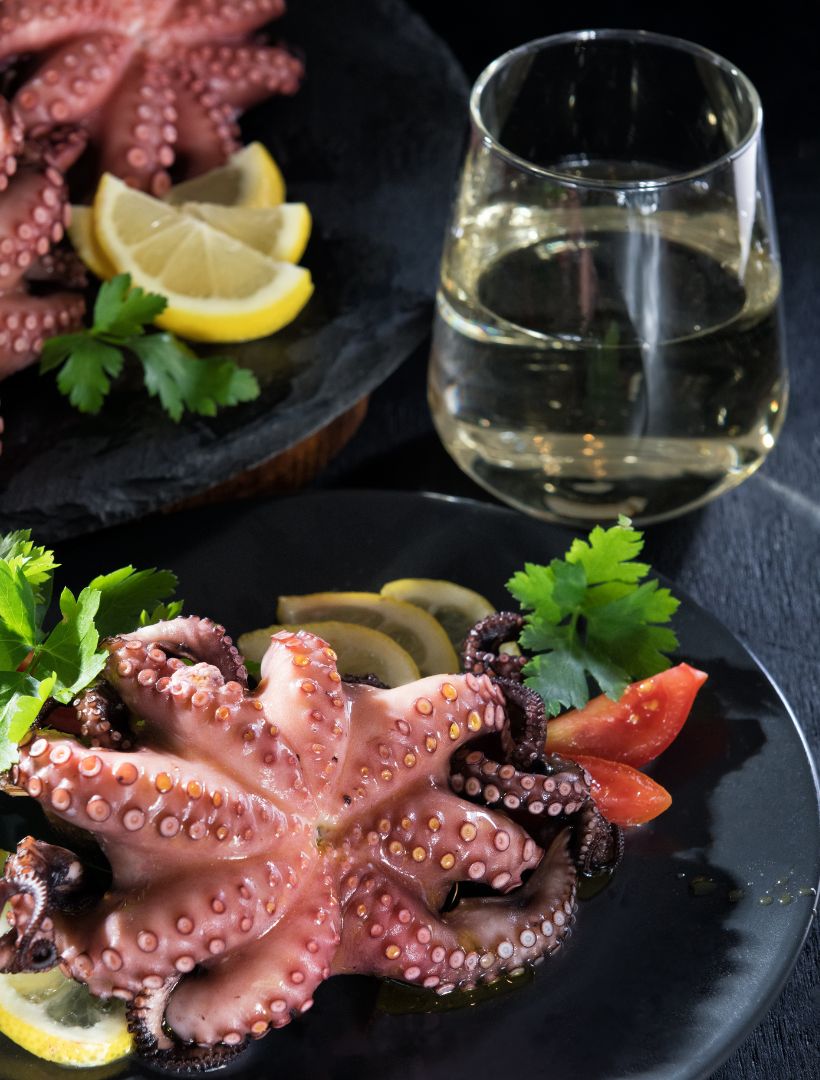
Equally valid is the production of White Wines, such as those produced with Bombino Bianco, Malvasia, Verdeca (in Salento) and Montepulciano.
White wines mostly accompany Apulian fish dishes, octopus, cuttlefish, sea urchins and raw seafood.
Among the best known white wines is Castel del Monte, white, named after the famous castle built by Frederick II.
